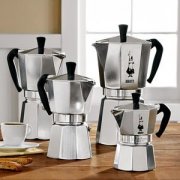Coffee connoisseurs' appreciation principles and techniques for tasting coffee

To taste coffee, you should not only drink it, but also smell it. Although there is no absolute formula for judging whether coffee is good or bad, mastering the following four principles commonly used by experts will help you understand and taste coffee:
Acidity (Acidity)
After the coffee is imported, the taste is light on the tip of the tongue, and the sour word looks eye-catching. In fact, the original taste and fresh vitality of coffee beans, just like wine, are contained in its sour taste. The acidity of fresh coffee, with fruit aroma, is just like the natural acid contained in lemon, grape, apple and other fruits. The taste is pleasant and fresh, which must be different from another word used to describe expired coffee, sour. Among the coffee, Yemeni mocha coffee is famous for its strong acidity.
Texture (Body)
After sipping coffee, is the taste feeling lingering on the back of the tongue and mouth, strong or light? Mellow coffee, even if the concentration of coffee powder is not high, can still bring a strong taste shock. Generally speaking, Mexican coffee has the lightest taste, while Sumatra (Manning) coffee has the strongest texture. Heavy-flavored coffee is best suited to perform with milk, highlighting its authentic mellow taste that cannot be concealed.
Aroma (Aroma)
Coffee is mellow in the air, from baking, grinding to brewing. Coffee beans try their best to release their fragrance at every stop of its long journey, so make good use of their sense of smell and experience the fragrant journey with the coffee.
Flavor (Flavor)
Connecting the above three to piece together the impression of coffee, some coffee flavors are diverse, sour, sweet, and bitter, while others are extremely sour, completely occupying the sense of smell and taste, and some people are used to using feeling to dominate judgment. does coffee have its own style? Does it have jungle or fruit aromas? Is your temperament gentle or masculine? This is the most emotional of all the tastes.
Important Notice :
前街咖啡 FrontStreet Coffee has moved to new addredd:
FrontStreet Coffee Address: 315,Donghua East Road,GuangZhou
Tel:020 38364473
- Prev

How to keep Coffee fresh Coffee
With the increase of time and processing procedures, the life of coffee will be reduced, but finding a suitable preservation method can prolong the shelf life of coffee. 1. Coffee should be stored in a dry, cool place, not in the refrigerator, so as not to absorb moisture. Coffee beans and ground coffee can be frozen, but it is important to note that take them out of the freezer.
- Next

Enjoy Italian style more easily than Lotte Bialetti mocha pot
When coffee began to become a common household drink, the earliest cooking method was to directly boil the coffee powder and water on the stove and filter it to drink. Since the 19th century, some people have tried to use steam to brew coffee, hoping to make a strong cup of coffee in a very short time. At the beginning of the 20th century, the industrial revolution began to ferment around the world, and the Italian Luigi Bezzera created a shape and momentum.
Related
- Beginners will see the "Coffee pull flower" guide!
- What is the difference between ice blog purified milk and ordinary milk coffee?
- Why is the Philippines the largest producer of crops in Liberia?
- For coffee extraction, should the fine powder be retained?
- How does extracted espresso fill pressed powder? How much strength does it take to press the powder?
- How to make jasmine cold extract coffee? Is the jasmine + latte good?
- Will this little toy really make the coffee taste better? How does Lily Drip affect coffee extraction?
- Will the action of slapping the filter cup also affect coffee extraction?
- What's the difference between powder-to-water ratio and powder-to-liquid ratio?
- What is the Ethiopian local species? What does it have to do with Heirloom native species?

